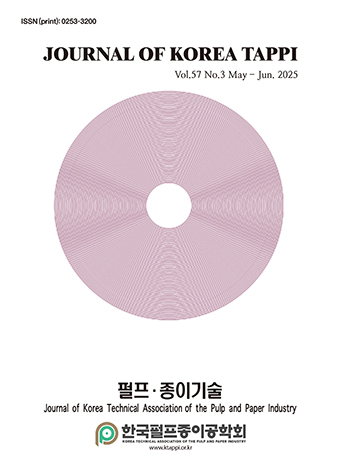Original Paper
Abstract
References
Information
- Publisher :Korea Technical Association of The Pulp and Paper Industry
- Publisher(Ko) :한국펄프종이공학회
- Journal Title :Journal of Korea TAPPI
- Journal Title(Ko) :펄프종이기술
- Volume : 55
- No :4
- Pages :49-56
- Received Date : 2023-07-11
- Revised Date : 2023-08-10
- Accepted Date : 2023-08-12
- DOI :https://doi.org/10.7584/JKTAPPI.2023.8.55.4.49



 Journal of Korea TAPPI
Journal of Korea TAPPI







